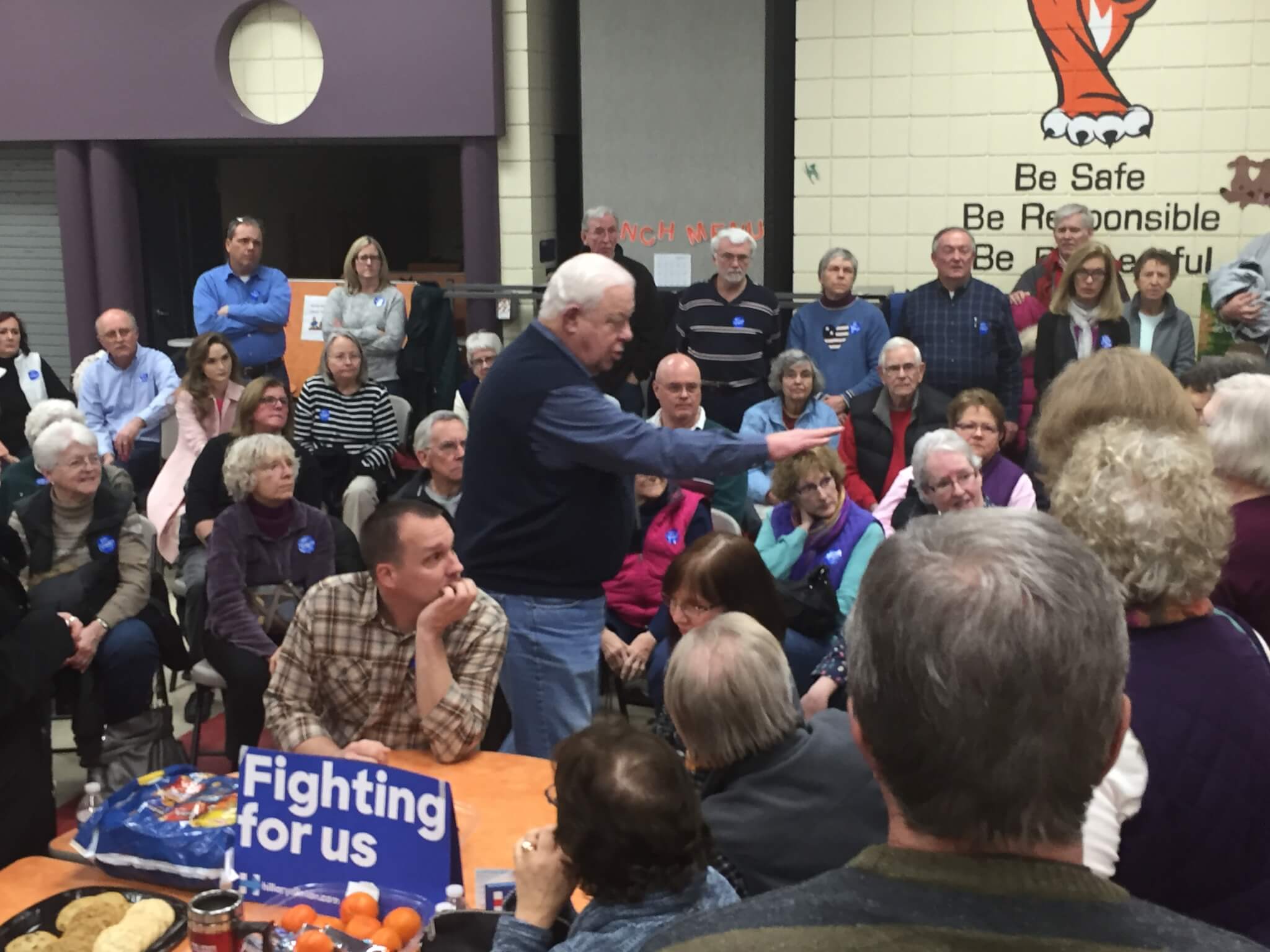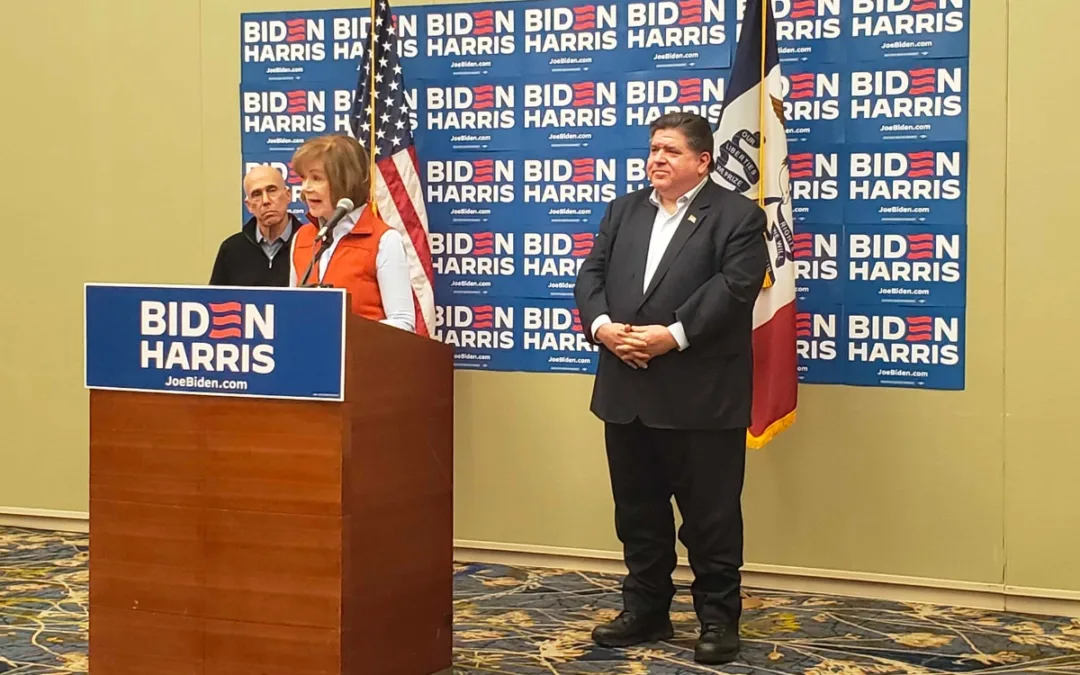
Throughout this week Starting Line will take a deep dive into the Iowa Caucus results and what it all meant, analyzing turnout patterns and what it means for the candidates’ support moving forward. I’m still recovering from being up until 4:30 in the morning to write up the final results (and, you know, the entire last month of exhaustion), but wanted to get a couple early takeaways. Here’s what I found most interesting at first glance from the Democrats’ side:
1. A Tight Race Everywhere – Aside from Sanders’ 60-40 win in Johnson County, there weren’t a lot of places around the state where one candidate dominated over the other (and many are even surprised Clinton did that well in Johnson). Typically you’ll see a clear urban/rural split, with one person taking most of Iowa’s largest counties. Instead, Clinton won Polk and Dubuque, while Sanders took Linn and Black Hawk. Scott County was incredibly close with Sanders winning there by less than a percentage point. Clinton won most of the rural counties, but Sanders captured quite a few as well. It was a close, gutty fight nearly everywhere in the state.
2. Clinton’s Base Of Support Flips – In what to me is the most fascinating result of the night, Clinton dominated in the type of middle class, highly-educated precincts that Barack Obama carried big in 2008. And Sanders stole away many white, working class precincts that Clinton did well in back in 2008. Clinton’s whole victory last night could be chalked up to her strength in the Des Moines suburbs. Clinton mopped up in West Des Moines, Clive and Urbandale. She won Dallas County with 57.5%, a county she received only 25% in in 2008. I’m still digging into the results, but it seems precincts broke down strictly on lines of age (which was to be expected from the polls, it’s just fascinating to see it happen on the map). In some counties, like Pottawattamie, Clinton’s precinct performance essentially flipped from 2008. In the working class west end of Council Bluffs where Clinton dominated in 2008, Sanders ended up winning many precincts. In the precincts in the hills with middle class homes where Obama or Edwards ran strong in 2008, Clinton captured most of the delegates. I’ll have a very in-depth post on all this later in the week.
3. Martin O’Malley Had No Chance – The former Maryland governor never really caught on with the Democratic electorate, for a number of reasons we’ll get into in another post. It’s still disheartening to his supporters that he got only half a percent of the final delegate total, but there was simply no helping it in the face of overwhelming turnout from Sanders and Clinton. He did, however, perform very well in a couple Latino precincts out in Western Iowa, validating his outreach efforts.
4. Did O’Malley Supporters “Hold Strong” A Bit Too Hard? – The final instruction from team O’Malley was to “hold strong” in your precinct and do everything you can to get viable. There was never any suggestion to swing toward one candidate or another. In my precinct, and in several others I heard from, most of the O’Malley group simply refused to go to another one after becoming non-viable. So they weren’t counted in the end at all. A plan of who to support would have given them more bargaining power, although it’s likely many of his backers would’ve just gone with who they liked.
5. Massive Turnout Good For Iowa Caucus – The caucus process got a boost with heavy turnout on both the Republican and Democratic side. The excitement level in the state was massive and many first-time caucus-goers turned out. That will help the Iowa Caucus going forward to push back against the criticism that too few participate. However…
6. Late Results – Obviously when you have a race come down to two tenths of a percentage point, any discrepancy is going to get close scrutiny. And there’s always going to be a handful of precincts that have problems and don’t report on time. But over a dozen Polk County precincts still hadn’t come in by around midnight, and it took entirely too long to track down many around the state. Making matters worse was the Sanders campaign blasting the Iowa Democratic Party for not having 90 temporary precinct chairs lined up before caucus night. Worse still was that a handful of precincts changed their location literally five hours before the caucus started. There’s already hints that there will be real pressure on IDP chair Andy McGuire and the staff in charge of organizing the caucus as to why these problems persisted through the night, and why the party wasn’t better prepared in so many precincts around the state.
7. The Coin Flips – It was particularly disheartening to see the national media run wild with the coin flip story. That’s just how the rules work. It’s how it’s always been done. If you have a tie, you have to break it somehow. But plenty in the media were more than happy to run with exasperated denouncements of how crazy it was. Part of the issue was that Clinton won all of the coin flips in an amazing statistical feat. I look forward to the conspiracy theories that pieces of currency have a clear anti-Sanders bias, and therefore the outcome was already rigged. [Update: the Register now reports that the state party says many of the coin flips that they can account for went for Sanders. So who knows.]
8. Anti-Clinton Fever Hits Sanders Rally – When Clinton came on the big screen at the Sanders rally a chant started from the audience of “She’s a liar!” That’s not good for the future of the party in any way.
by Pat Rynard
Posted 2/2/16
Politics

It’s official: Your boss has to give you time off to recover from childbirth or get an abortion
Originally published by The 19th In what could be a groundbreaking shift in American workplaces, most employees across the country will now have...

Trump says he’s pro-worker. His record says otherwise.
During his time on the campaign trail, Donald Trump has sought to refashion his record and image as being a pro-worker candidate—one that wants to...
Local News

No more Kum & Go? New owner Maverik of Utah retiring famous brand
Will Kum & Go have come and gone by next year? One new report claims that's the plan by the store's new owners. The Iowa-based convenience store...

Here’s a recap of the biggest headlines Iowa celebs made In 2023
For these famous Iowans, 2023 was a year of controversy, career highlights, and full-circle moments. Here’s how 2023 went for the following Iowans:...





